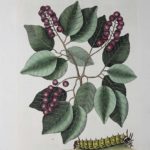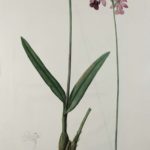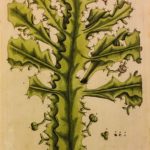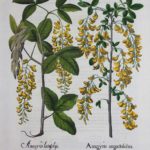This mini-exhibition highlights botanical illustrations from the permanent collections of the McClung Museum.
The museum has hundreds of natural history prints by important artists and naturalists. Botanical Illustrations features work from the extraordinary naturalists and artists Basilius Besler (1561–1629), Mark Catesby (1683–1749), Elizabeth Blackwell (1707–1758), and Pierre-Joseph Redouté (1759–1840).
On display are plates from Besler’s 1613 publication, Hortus Eystettensis (The Garden of Eichstätt) which was one of the first illustrated herbals noted for its lifelike depictions and its significant effort to systematize botanical nomenclature. Also on view are plates from explorer Mark Catesby’s 1731–1746 publication, The Natural History of Carolina, Florida, and the Bahamas, containing the earliest color prints of American flora and fauna. Elizabeth Blackwell’s 1737–1739 A Curious Herbal became an important reference work for physicians of medicinal and new world plants. Finally, Redouté, often called the greatest botanical illustrator of all time, created some of his most important hand-colored engravings in Les Liliacées published 1802-1816.
- Pigeon-Plum, Horned Devils Caterpillar, 1731–1747, Mark Catesby, Hand-colored engraving, from The Natural History of Carolina, Florida, and the Bahama Islands…, Volume 2, Plate 94, Ardath and Joel E. Rynning Acquisitions Fund 2015.2.2.
- Bilobed Epidendrum, 1802–1816, Pierre-Joseph Redouté, Hand-colored stipple engraving, from Les liliacées, Volume 2, Plate 84. Gift of W. Graham Arader III 2015.13.5
- The True Euphorbium, 1757-1773, Christopher Jacob Trew, after Elizabeth Blackwell, from Herbarium blackwellianum, Nuremburg, Plate 339, Gift of John Glynn, 2016.7.10.
- Laburnum; Alpine Laburnum, 1613, Basilius Besler, Hand-colored copperplate engraving, from Hortus Eystettensis (Nuremberg, 1st edition) Plate 8, Gift of Jeffery M. Leving 2017.2.3
Curated by Jefferson Chapman.




